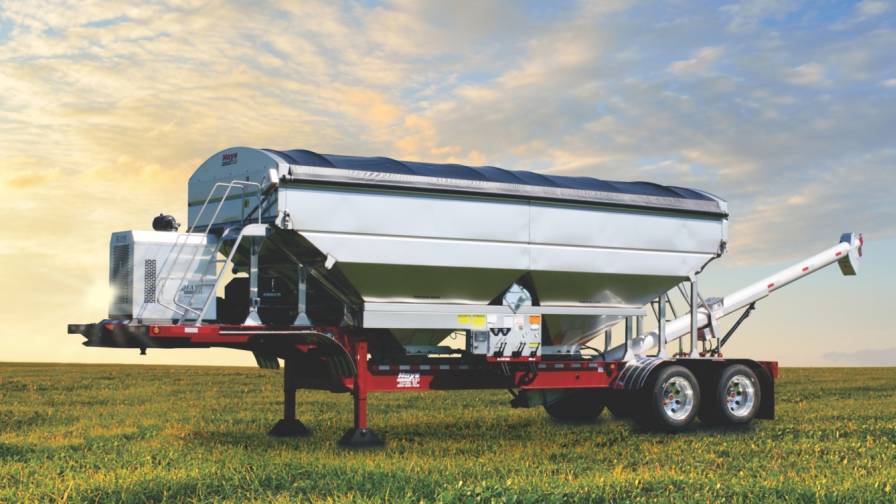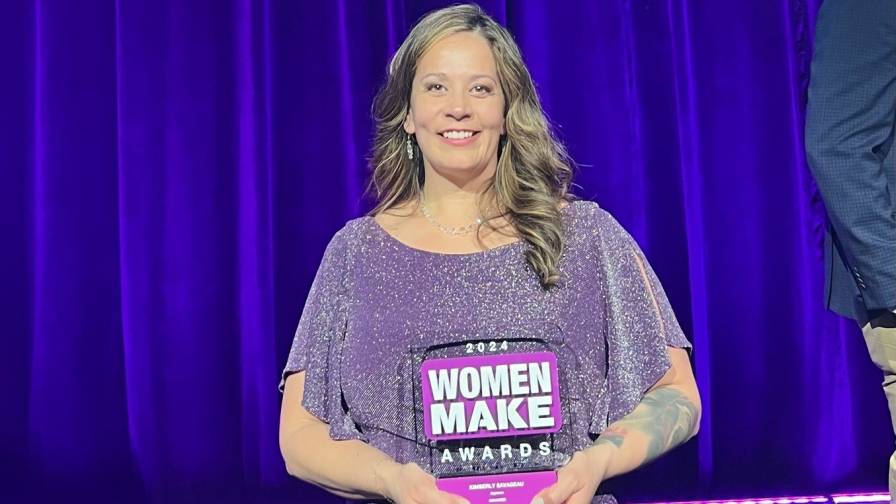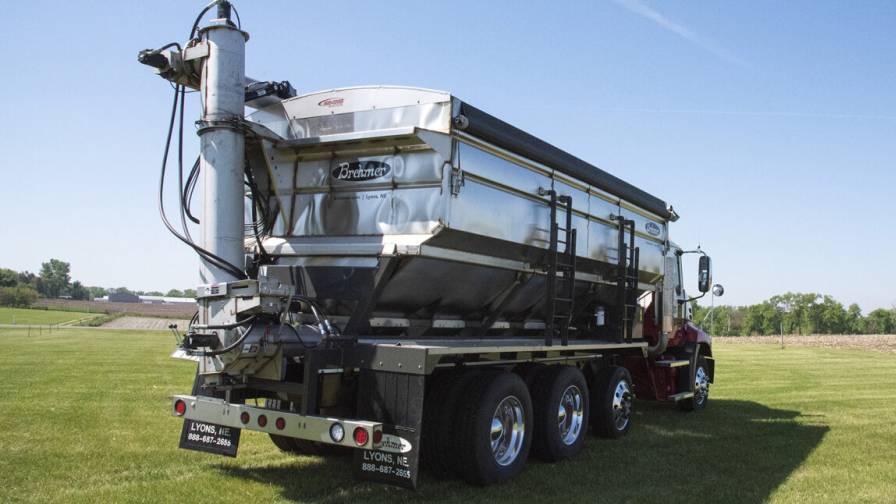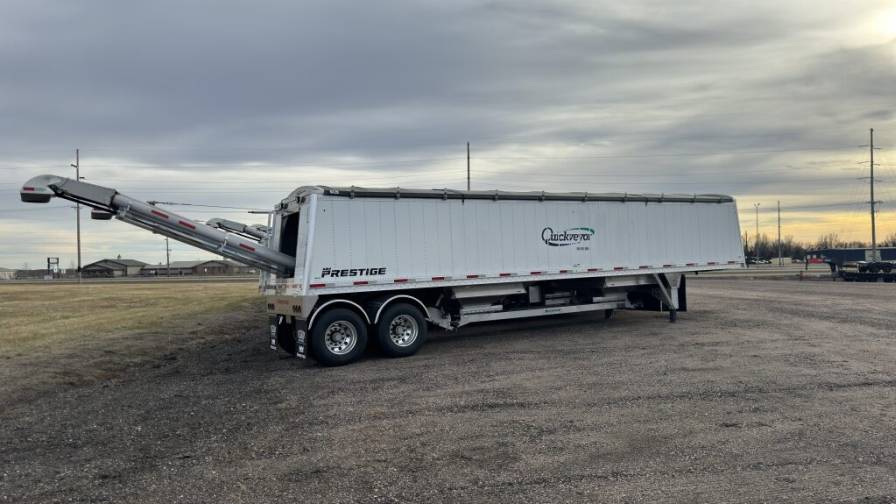Why Customer Feedback Is Essential for Fertilizer Tender Manufacturers
In the ever-evolving landscape of agriculture, the fertilizer season is undergoing a notable transformation marked by its increasing time constraint and intensification. In response to this industry shift, equipment manufacturers are diligently refining their approach to fertilizer tender design, not only to optimize the efficient movement of the maximum amount of product but also to prioritize the ease of operation for field operators.
“As fertilizer companies grow, they look for ways to improve their tender fleets. They look for better designs with advanced features that will impact their bottom line,” says Joe Brehmer, President of Brehmer Mfg., Inc.
With several factors causing the rise in demand for tenders, manufacturers are aiming to keep up with current trends and current competitors. “There’s plenty of unique products on the market. The suppliers that offer great customer service along with efficient and innovative designs that are coupled with user safety will continue to grow,” Brehmer says.
Other manufacturers of tenders echoed the same sentiment. “Competition in the industry keeps the tender market interesting with new ideas, designs, and improvements happening every year. Most of the updates made at Hays-LTI are driven by user feedback rather than what the competition is doing,” says Matthew Hays, Sales and Production, Hays-LTI.
Receiving Feedback
Listening to customer feedback is crucial for business success. It provides invaluable insights into customer needs, preferences, and pain points, allowing companies to enhance products and services.

The Hays tender features a stainless steel cradle. Photo credit: Hays
“Tenders are pivotal in ag operations, and we strive to build a tender that people can trust to get the job done,” Hays says. “The main focus of our tender production is to build a tough piece of equipment that people can rely on to run the way it’s supposed to and is safe to operate. Based on our conversations with customers, we always look for ways to make our tenders easy to use and we always stand behind our tenders with the best service that we can offer.
“From Day One, when Hays-LTI started building equipment for the ag industry in the early 1970’s, listening to our customer’s needs has been the driving force behind how we design our equipment,” he adds.
There are two ways to increase profits — by improving efficiency and cutting costs. A product that can do both is a huge benefit.
“Customers are always looking for ways to increase their hauling capacity, increase unloading speeds, and cut back on maintenance downtime while maintaining or improving the unit’s safety,” Brehmer says. “We’re constantly in contact with our network of dealers to ensure that customer needs are being met. Any input that can be garnered from the tender operator is heavily considered as we update our products. We know how important it is to our customers to reduce maintenance downtime. So, we worked to update our orbital motor placements and bearing designs to make sure they lasted longer and were easier to maintain.”
Lydia Peterson-Salcedo, COO, Peterson Motors/Quickveyor, adds: “Most of our product improvements and custom options are a direct results of customer feedback. Quickveyor has noticed a shift in options customers are ordering for their trailers. Self-contained pony motors have become popular as well as power traps. These options aid in versatility, giving the customer the ability to pair any truck and any driver to the trailer, no wet kit needed. The power traps provide additional ease of operation for drivers as well.”
Designing Tenders
With subtle changes to design manufacturers aim to craft tenders with precision to optimize product flow and elevate the overall experience while promoting sustainability. “The Quickveyor was specifically designed to combat the lack of longevity in the steel units. The ability to haul more products with a conveyor system that is built to last with a stainless-steel design promotes a more sustainable mentality,” Peterson-Salcedo says.
According to Brehmer: “We’ve found the best way to improve our designs and maximize efficiency is to listen to what our customers tell us. We want to know if they’re experiencing issues with their tenders. We want to improve upon it. Our reputation rests on our ability to innovate, meet our customers’ needs, and help them improve their operations. Our patent-pending design saves on down time and maintenance.
“Cutting back on maintenance and downtime for repairs is always at the top of the list for our customers. We’re addressing these needs with our top-mounted orbital motor, low center of gravity, bin designs that eliminate the need for vibrators, and our new spinning bearing design to name a few of our features. Another time saving feature we offer on our overhead tenders is the ability to swing the overhead auger 270 degrees. This means the driver doesn’t have to move and a spreader can be filled from either side of the tender.”
Service and insight are key, Hays shares: “Hays-LTI designs tenders with reliability and a user-friendly design in mind. We understand that down-time is not acceptable, so everything that leaves our facility is inspected for quality at a meticulous level. If any problems arise, we have a lightning-fast service department that can answer questions, provide insight, and ship parts the same day in most cases if necessary. We always stand behind what we build because, as a family business, our name is on our equipment, and we want it to perform to the highest standards.
“Safety features and designs are a major part in building any heavy-duty equipment. We are constantly checking our drawings and plans from an engineering standpoint to address ways we can provide a smooth operating experience for our customers. Customers in the tender market want tenders that have higher capacity, easier and faster unloading, and the ability to operate safely on the road and in the field. The equipment our customers get from us checks those boxes, and we are constantly improving based on new technology becoming available and customer feedback. Many times, the designs we implement are as simple as lowering the center of gravity of the load during transport or reinforcing certain areas in our assembly. We have invested heavily in our production facility to output more high-quality components that are really making a difference in the durability of what was already a tough tender.”
Overcoming Challenges
Navigating uncertainties, market changes, and adapting to evolving demands remain essential for manufacturers sustained success. “Inflation and the current rise in interest rates are of concern for customers. The challenge of finding employees to drive and operate their equipment creates the need to get product to the field as efficiently as possible,” Brehmer says.
Hays adds: “Government regulations are a major factor in the equipment industry. Challenges presented by DOT (Department of Transportation) compliance regulations in multiple states, CDL (commercial driver license) driver shortages, and proposed environmental regulations in the agriculture industry, just to name a few, are always at the forefront of conversation. Hays-LTI stays involved in many different organizations and associations in our fertilizer and ag industry to help protect the interests of our customers and our business.”
Despite these challenges, manufacturers are excited about the opportunities for growth that lie ahead in the new year. “I couldn’t be prouder of the team at Hays-LTI and how much hard work has been put in to make sure we provide the best equipment possible without cutting any corners. Everyone at Hays-LTI is excited to be able to wake up and do what we do every day. We take a lot of pride in our work and our equipment, and I think that makes all the difference,” Hays says.
Brehmer offers this final thought: “Tenders remain an integral part of the fertilizer industry. We see this as an opportunity to continue developing and pushing the limits of what’s considered ‘typical’ for fertilizer equipment across the board.”







